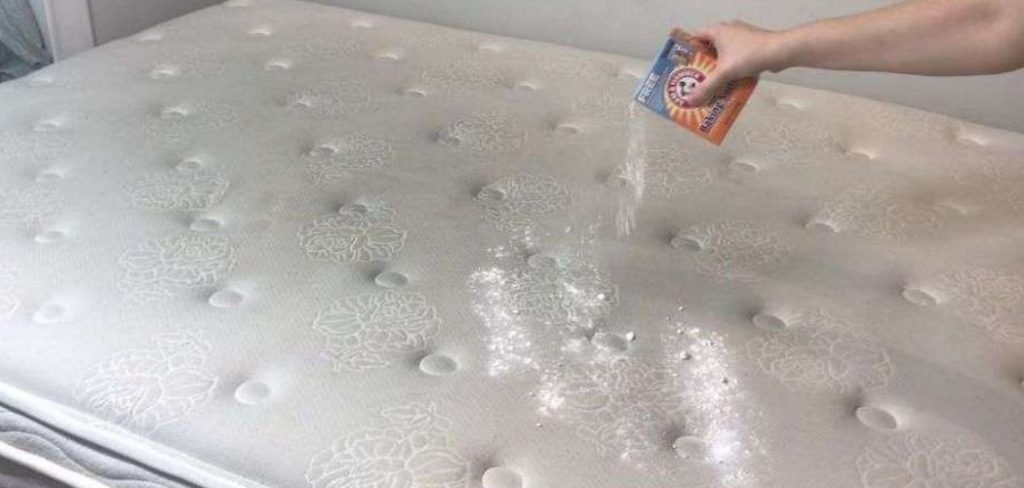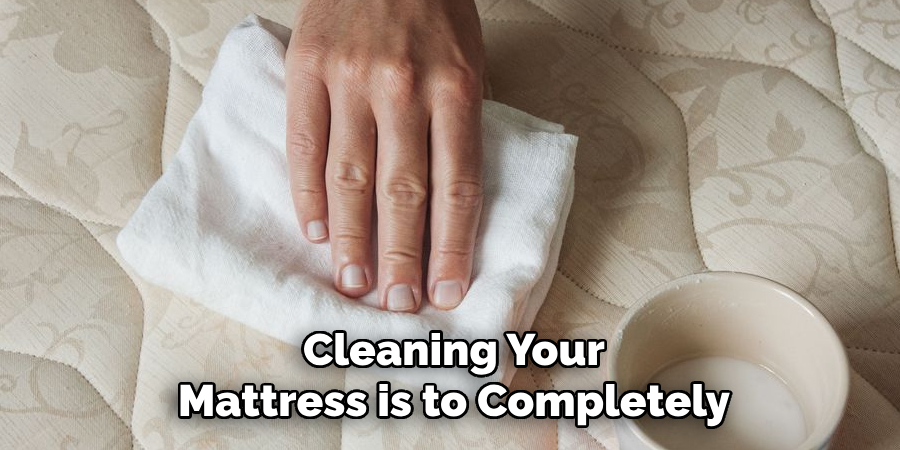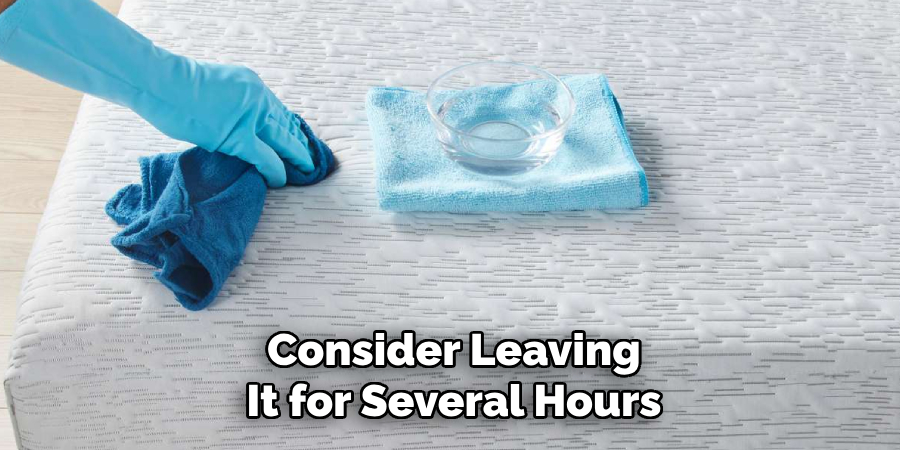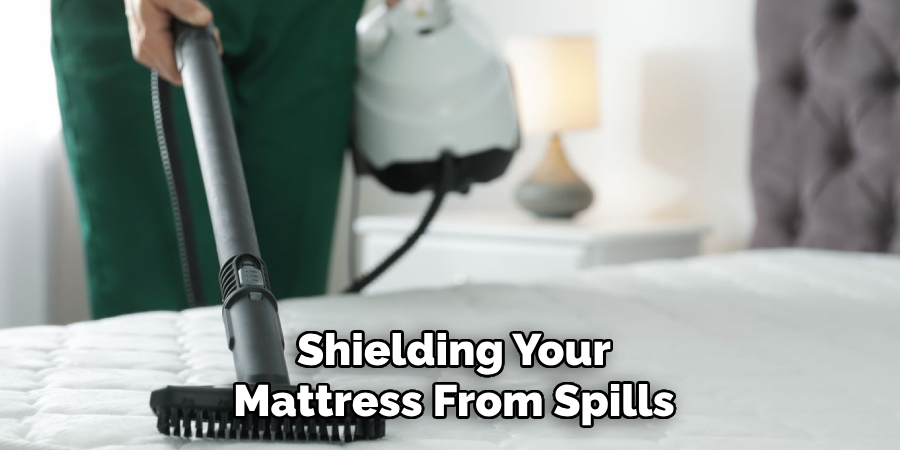Are you tired of sleeping on a dirty, dusty mattress? Are you looking for ways to clean your deep clean mattress without having to use a vacuum cleaner? Look no further, as we have some easy and effective methods for you.

Keeping your mattress clean is essential for ensuring a healthy and comfortable sleeping environment. While vacuums are a standard tool for mattress cleaning, you may not always have one available. Fortunately, there are effective methods to clean your mattress without using a vacuum. By utilizing readily available household items and a few simple techniques, you can effectively remove dust, stains, and odors from your mattress, thereby prolonging its lifespan and maintaining its freshness.
This guide on how to clean mattress without vacuum will walk you through the steps to achieve a clean and hygienic mattress without the need for a vacuum cleaner.
What Are the Benefits of Cleaning Your Mattress Without a Vacuum?
Cleaning your mattress without a vacuum has several benefits, including:
- Cost-effective: Using household items to clean your mattress is a more affordable option compared to purchasing or renting a vacuum cleaner.
- Safe for Sensitive Sleepers: Some people may have allergies or sensitivities to the noise or dust particles produced by vacuums. By using gentler cleaning methods, you can ensure that your mattress is safe for those with sensitivities.
- Environmentally-friendly: Avoiding the use of a vacuum reduces electricity consumption and eliminates the need for disposable vacuum bags, making it an eco-friendly cleaning option.
- Easy Maintenance: Regularly cleaning your mattress using simple and accessible methods can prolong its lifespan and prevent the buildup of unwanted dirt and debris.
What Will You Need?
To clean your mattress, you will need:
- Baking soda
- Distilled white vinegar
- Essential oils (optional)
- Spray bottle
- Soft-bristled brush or cloth
Once you have gathered all the necessary materials, you can begin the cleaning process.
10 Easy Steps on How to Clean Mattress Without Vacuum
1. Remove Bedding
The first step in cleaning your mattress is to completely remove all bedding, including sheets, pillowcases, and any mattress protectors. This ensures that you have a bare surface to work on and allows you to clean the mattress properly without interference. Place all the removed bedding into the laundry, as washing them simultaneously helps eliminate dust mites, bacteria, and odors that may have accumulated. It’s a good idea to soak them in hot water, if the fabric allows, as this can effectively kill germs and allergens.

2. Spot Clean Stains
To tackle stains effectively, start by identifying the type of stain, as different stains require different cleaning approaches. For most stains, prepare a cleaning solution by mixing mild dish soap with warm water. Dip a clean cloth into the solution and gently blot the stain, avoiding excessive scrubbing, which can damage the mattress fibers. For tougher stains, such as blood or sweat, use a mixture of hydrogen peroxide and baking soda.
Apply it directly to the stain, allow it to sit for a few minutes, then blot it with a damp cloth. Always ensure the cleaned area is thoroughly dried to prevent moisture from seeping into the mattress, which can lead to mold or mildew growth.
3. Apply Baking Soda
Baking soda is an excellent, natural deodorizer that helps to freshen your mattress and neutralize lingering odors. To apply, sprinkle a generous layer of baking soda across the entire surface of the mattress, focusing on areas that may hold trapped smells or stains. For deeper deodorizing, you can add a few drops of your favorite essential oil, such as lavender or eucalyptus, to the baking soda before applying it. Allow the baking soda to sit on the mattress for several hours—ideally, leave it on for at least 8 hours or overnight.
This downtime allows the baking soda to absorb odors and moisture effectively. Afterward, use a vacuum cleaner with an upholstery attachment to thoroughly remove the baking soda residue, ensuring your mattress is left fresh and clean.
4. Add Essential Oils
Essential oils not only enhance the freshness of your mattress but can also create a calming and relaxing environment. When choosing essential oils, select scents that promote relaxation, such as lavender, chamomile, or sandalwood. Mix a few drops of your preferred essential oil with the baking soda before sprinkling it on the mattress. This will help infuse your mattress with a pleasant aroma that lingers, enhancing your sleep experience. Always test a small, inconspicuous area of the mattress first to ensure there are no adverse reactions.
5. Allow Baking Soda to Sit

Allow the baking soda to sit on the mattress for at least 30 minutes, but for best results, consider leaving it for several hours or even overnight. This gives the baking soda ample time to absorb moisture, odors, and oils from the mattress. The longer it remains, the more effectively it can neutralize unpleasant smells and freshen up your mattress. Use this time to clean other parts of your bedroom or tackle other household chores while the baking soda works its magic.
6. Brush Away Baking Soda
After allowing the baking soda to sit for the desired amount of time, it’s time to remove it. Using a vacuum cleaner with an upholstery attachment, thoroughly vacuum the entire mattress surface to ensure all of the baking soda is removed. Pay extra attention to crevices and seams where residue may accumulate. This step not only helps eliminate the baking soda but also lifts any trapped dirt or dust, leaving your mattress fresh and clean. Regularly cleaning your vacuum filter is recommended to maintain its efficiency for tasks like these.
7. Air Out the Mattress
Allowing your mattress to air out is a crucial step in maintaining its freshness and cleanliness. Once the baking soda has been vacuumed away, leave the mattress uncovered for several hours, preferably in a well-ventilated room. Open windows to increase airflow and allow natural sunlight to hit the mattress, as sunlight helps to eliminate lingering odors and can act as a natural disinfectant. Airing out the mattress periodically, even outside of cleaning sessions, can prolong its lifespan by preventing the buildup of moisture and bacteria.
8. Flip the Mattress
Flipping the mattress is an essential step in maintaining its shape and ensuring even wear over time. Start by carefully lifting the mattress from one side, enlisting help if it is cumbersome. Rotate it 180 degrees so that the head side becomes the foot side. Then, flip it over so the underside now faces up. This process helps distribute the weight and pressure more evenly, reducing the risk of sagging or indentations. It is recommended to perform this task every three to six months for optimal mattress care and extended durability.
9. Protect with a Mattress Cover
A mattress cover serves as a protective barrier, shielding your mattress from spills, stains, dust, and allergens. Opt for a cover that is waterproof and breathable to maintain comfort while safeguarding against moisture and accidents. Mattress covers are also easy to remove and machine washable, making regular cleaning a simple and convenient process.

Investing in a high-quality mattress cover not only extends the lifespan of your mattress but also promotes a healthier sleeping environment. Ensure that you choose one that fits snugly and complements the size and type of your mattress for optimal protection.
10. Reassemble the Bedding
Start by placing the freshly cleaned mattress cover securely over the mattress, ensuring it fits snugly without any wrinkles. Next, lay down the fitted sheet, pulling the corners tightly over the mattress for a smooth surface. Proceed with the flat sheet, aligning it evenly and tucking it in at the foot of the bed. Add blankets or a comforter, spreading them out uniformly and adjusting as needed for symmetry. Lastly, arrange pillows with clean pillowcases at the head of the bed to complete the process.
By following these steps, your bed will not only look inviting and organized but also provide a comfortable and clean sleeping environment.
5 Things You Should Avoid
- Using Excess Water
When cleaning a mattress without a vacuum, it’s essential to avoid soaking the surface with excessive water. Excess moisture can seep into the mattress, making it difficult to dry completely and potentially leading to the growth of mold or mildew.
- Skipping Spot Testing
Avoid using cleaning solutions on your mattress without first spot-testing them. Some cleaners may discolor or damage the fabric, so always test on an inconspicuous area to ensure compatibility.
- Scrubbing Too Hard

Vigorous scrubbing can damage the material of your matress, leaving it worn or torn. Instead, opt for gentle blotting motions to treat stains or clean the surface.
- Using Harsh Chemicals
Steer clear of strong chemicals like bleach or ammonia, as these can degrade the mattress material and leave behind harmful residues that may affect your health.
- Ignoring Proper Drying
Never skip the drying process. Failing to dry your mattress thoroughly after cleaning can trap moisture, leading to unpleasant odors or the growth of bacteria and mold. Always use fans or sunlight to ensure it dries completely.
Conclusion
Cleaning a mattress without a vacuum is entirely feasible with the right approach and tools.
By utilizing simple household items like baking soda, a brush, and a damp cloth, you can effectively remove dirt, odors, and stains. Remember to scrub gently, allow sufficient drying time, and avoid using harsh chemicals that can damage the mattress material. A little effort and consistency in cleaning will ensure your mattress remains fresh, comfortable, and hygienic for a better night’s sleep.
Hopefully, the article on how to clean mattress without vacuum has provided you with useful tips and tricks.
Huston Douthit is a distinguished figure in the world of furniture design, with a decade of expertise creating innovative and sustainable furniture solutions. His professional focus lies in merging traditional craftsmanship with modern manufacturing techniques, fostering designs that are both practical and environmentally conscious. As the author of Fruniturix, Huston delves into the art and science of furniture-making, inspiring artisans and industry professionals alike.
Education
- RMIT University (Melbourne, Australia)
Associate Degree in Design (Furniture)- Focus on sustainable design, industry-driven projects, and practical craftsmanship.
- Gained hands-on experience with traditional and digital manufacturing tools, such as CAD and CNC software.
- Nottingham Trent University (United Kingdom)
Bachelor’s in Furniture and Product Design (Honors)- Specialized in product design with a focus on blending creativity with production techniques.
- Participated in industry projects, working with companies like John Lewis and Vitsoe to gain real-world insights.
Publications and Impact
In Fruniturix, Huston shares his insights on furniture design processes, materials, and strategies for efficient production. His writing bridges the gap between artisan knowledge and modern industry needs, making it a must-read for both budding designers and seasoned professionals.


